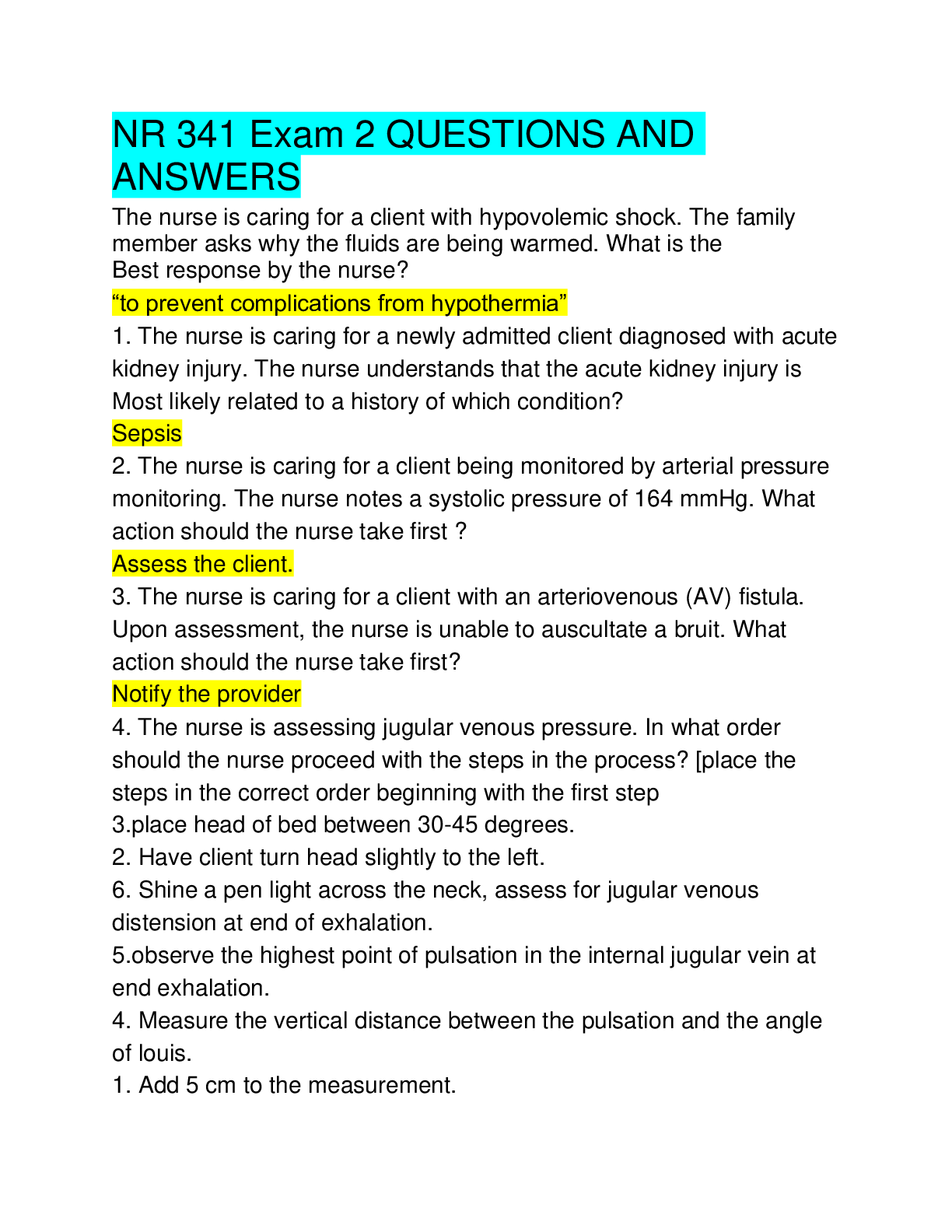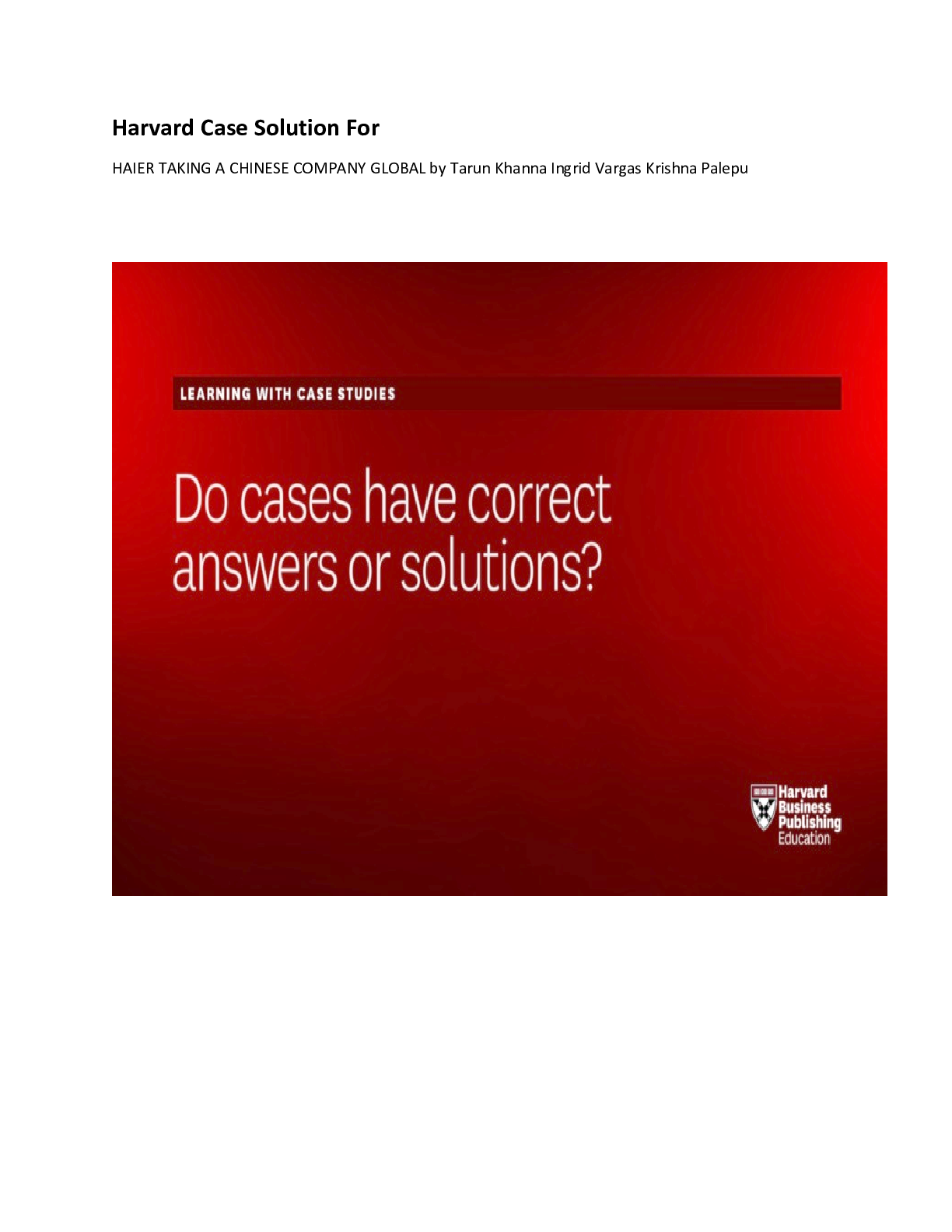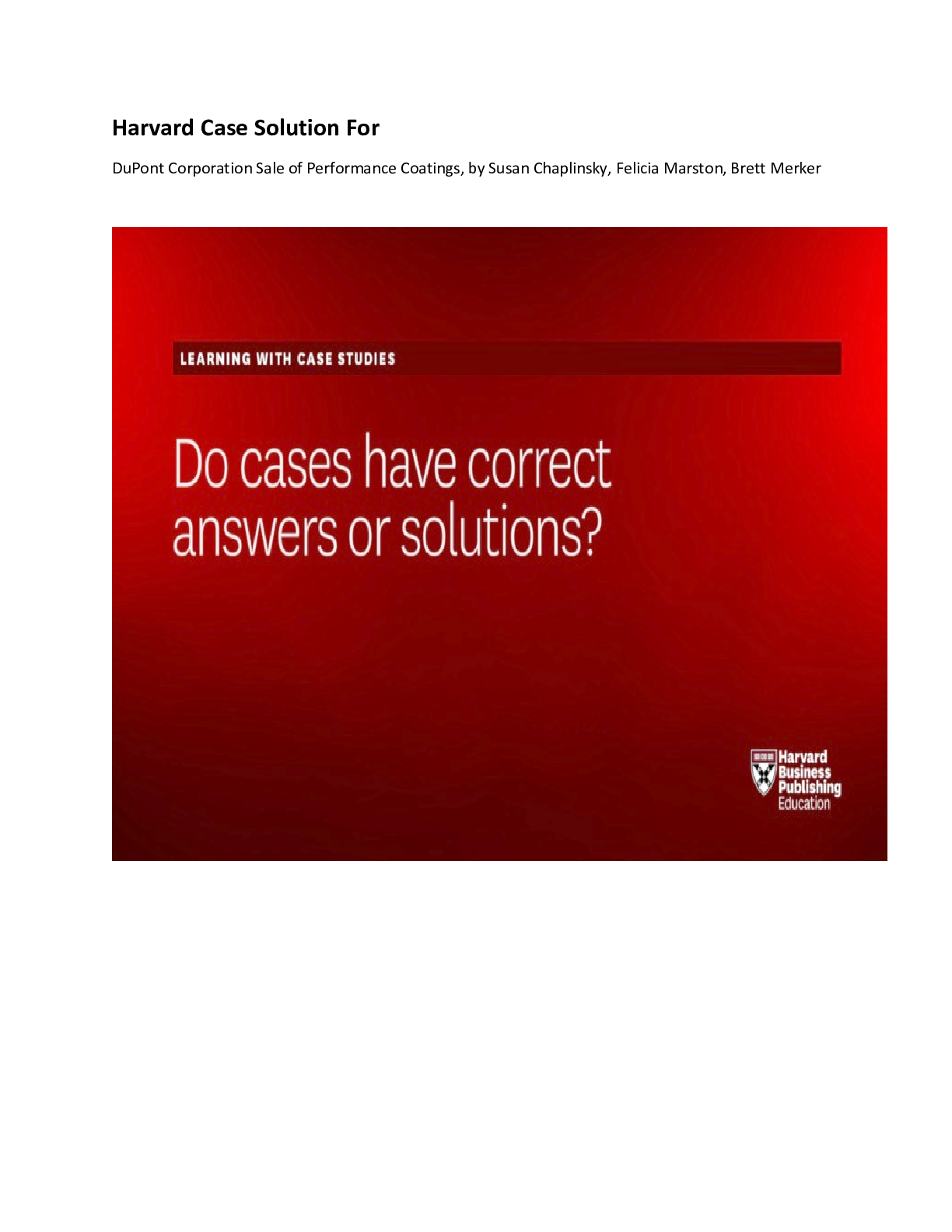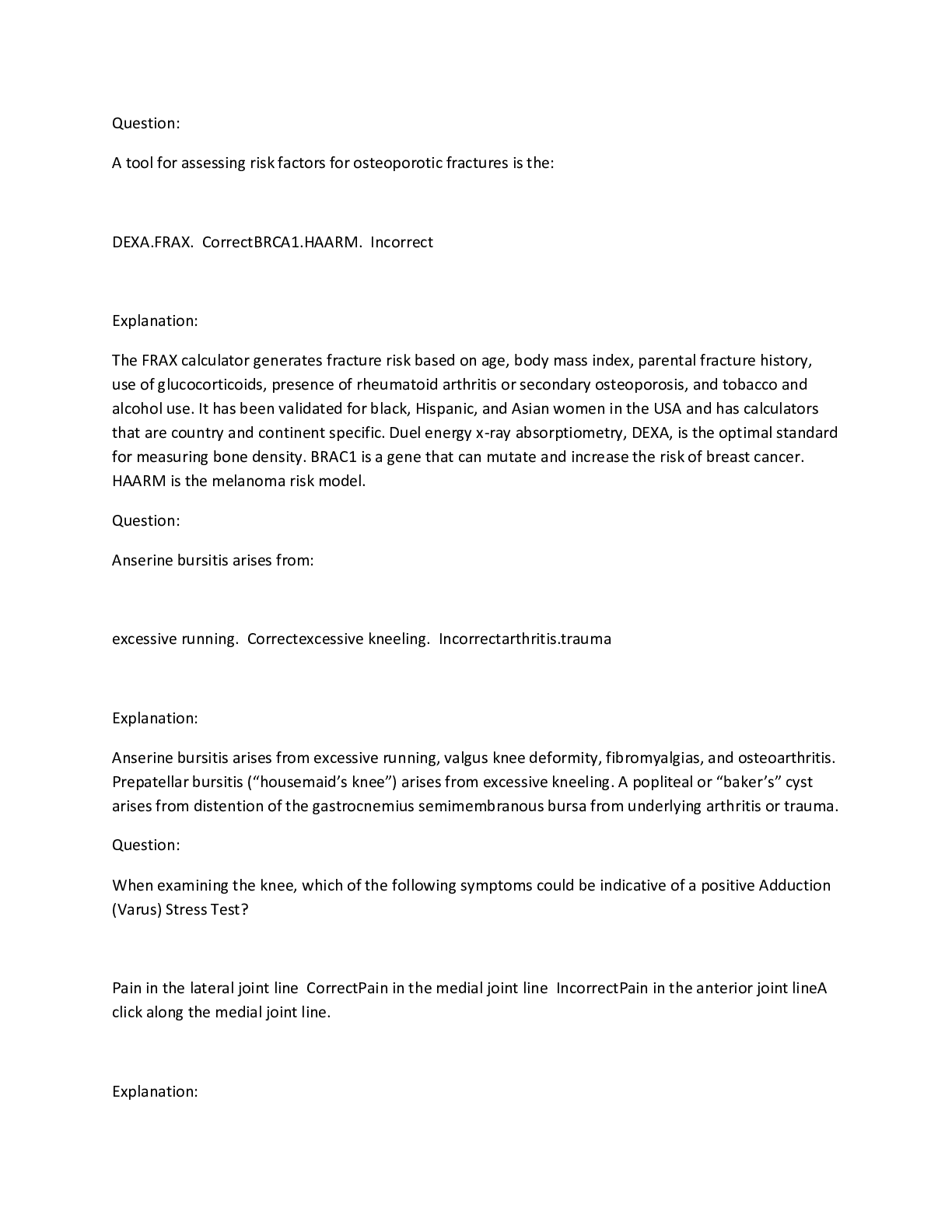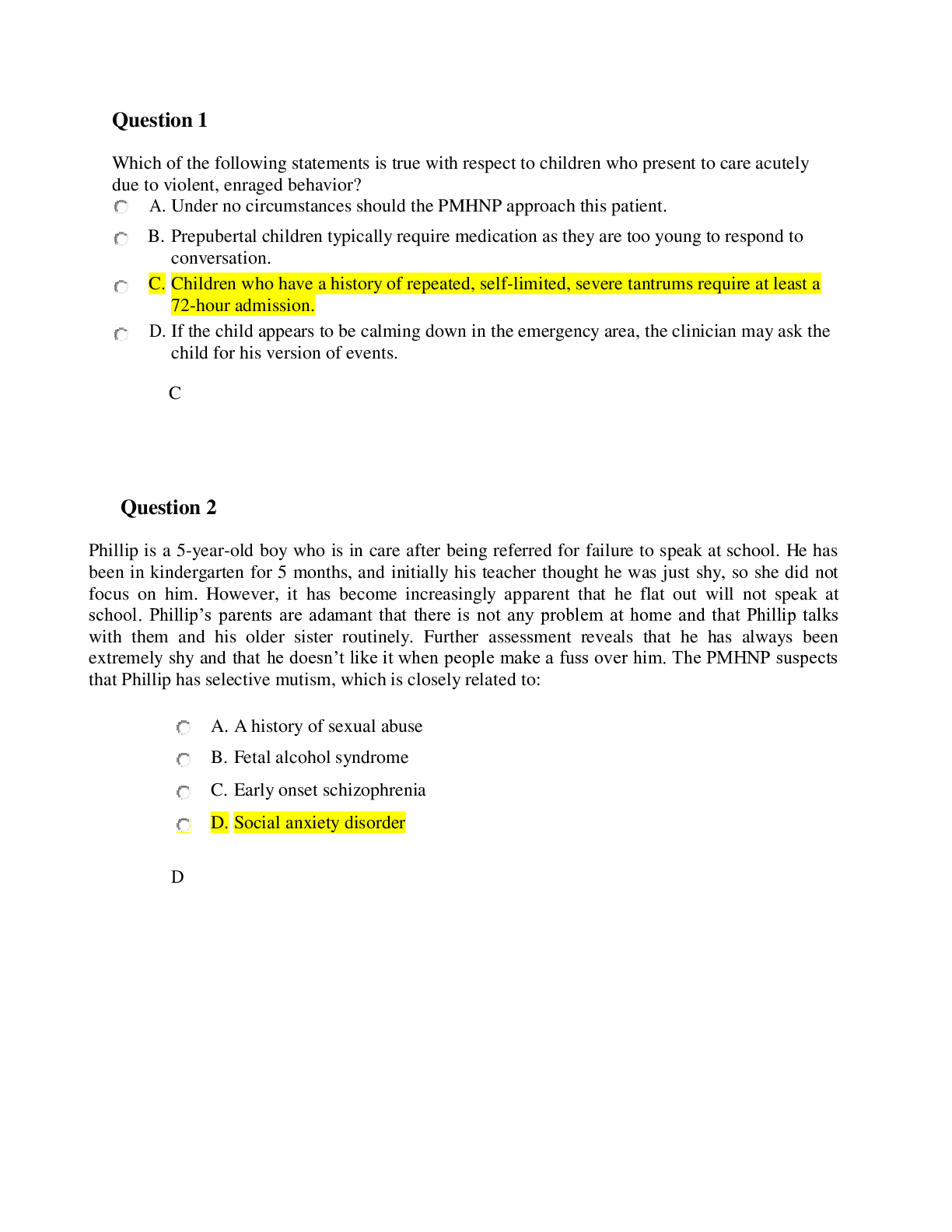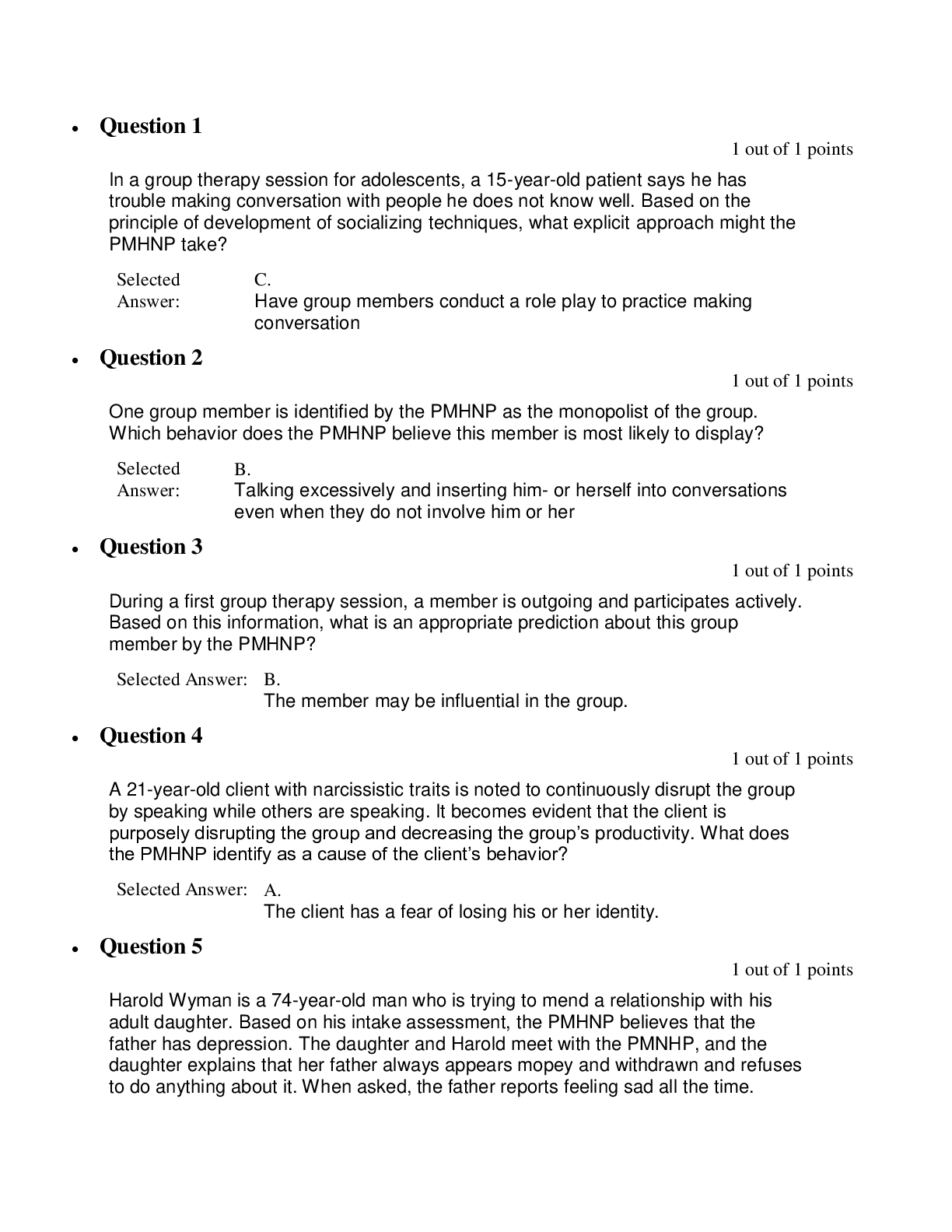BUSI 3007 MIDTERM EXAM - QUESTION AND ANSWERS | LATEST SOLUTION
Document Content and Description Below
BUSI 3007 Midterm Exam - Question and Answers BUSI 3007 Midterm Exam 1. According to Thite (2004), in order for knowledge to be a strategic goal leading to a competitive advantage, it must be: ... 2. According to the Collison and Parcell textbook, in order to create an environment in which knowledge flourishes, we need: 3. According to the Collison and Parcell textbook, Knowledge Management is about all of the following processes except: 4. Knowledge validation refers to: 5. According to Collison and Parcell, the starting point for using the holistic model: 6. Organizational knowledge is embodied in: 7. According to Collison and Parcell, "captured knowledge" requires ____________________. 8. The three fundamental knowledge processes are: 9. The four pillars that support KM initiatives are: 10. Who creates valuable organizational knowledge? 11. According to economists (Knapp, 1988), ___________ is becoming the most important product in the United States. 12. Information Technology (IT)-centric KM focuses on: 13. According to Thite (2004), a main reason why KM has focused more on technology than on HR is because: 14. According to Herzberg's Two Factor Theory of Motivation (Hendriks, 1999), hygiene factors are unlikely to contribute to: 15. According to Thite (2004), learning in an organization is mostly: 16. How is second-generation KM different from first-generation KM? 17. People share knowledge because: 18. According to Knapp (1998), the best reason for companies to embrace knowledge management is: 19. In second-generation KM, Knowledge Life Cycles are seen as: 20. According to the Collison and Parcell textbook, knowledge management focuses on more than just know how because it is also important to have: 21. According to Hendriks (1999), before knowledge sharing can take place, the knowledge owner must ________________ their knowledge. 22. Knowledge integration is: 23. Second-generation KM focuses on: 24. According to the Collison and Parcell textbook, the process of creating knowledge begins with _____________. 25. According to Hendriks (1999), a common motivation to introducing technology into the workplace is that it may _________ the individual knowledge worker. [Show More]
Last updated: 2 years ago
Preview 1 out of 6 pages

Buy this document to get the full access instantly
Instant Download Access after purchase
Buy NowInstant download
We Accept:

Reviews( 0 )
$12.00
Can't find what you want? Try our AI powered Search
Document information
Connected school, study & course
About the document
Uploaded On
Feb 16, 2021
Number of pages
6
Written in
Additional information
This document has been written for:
Uploaded
Feb 16, 2021
Downloads
0
Views
71


